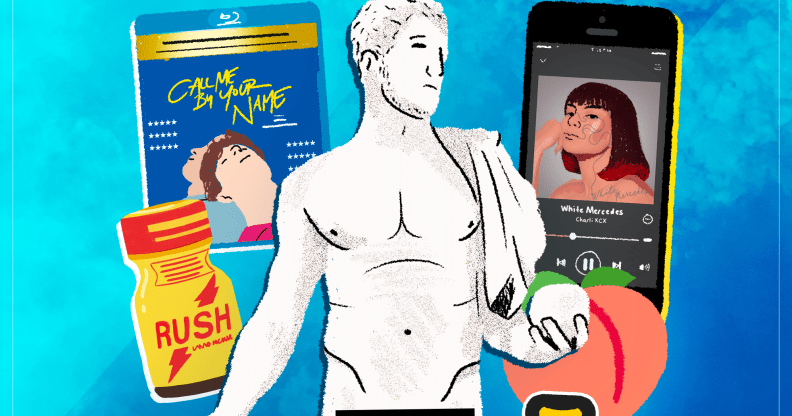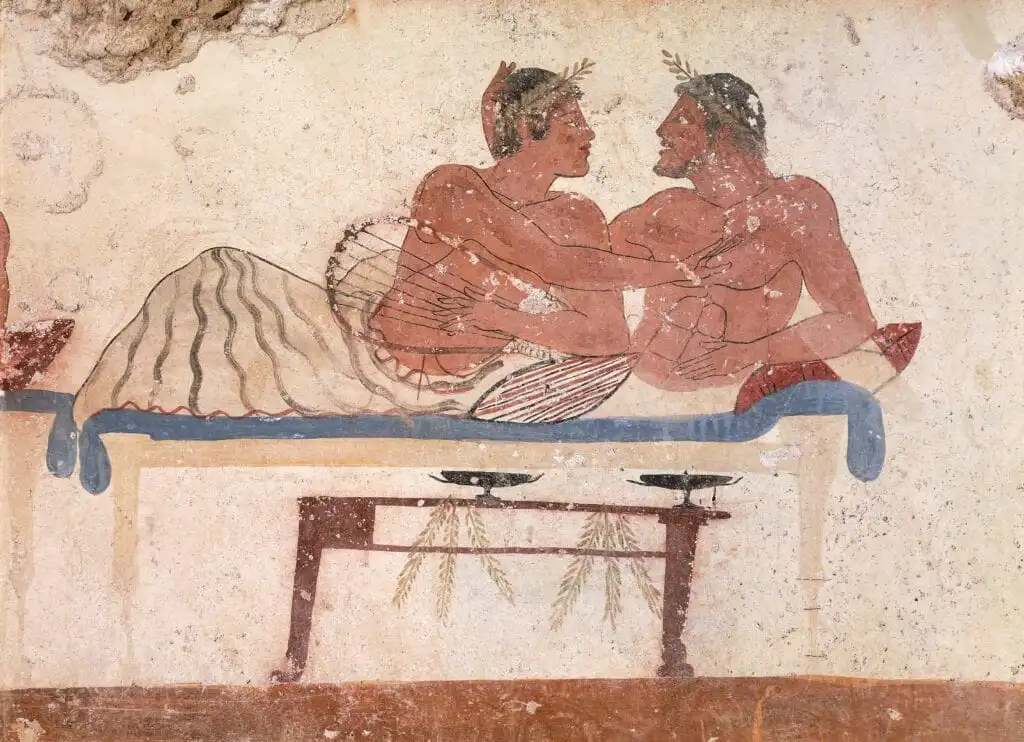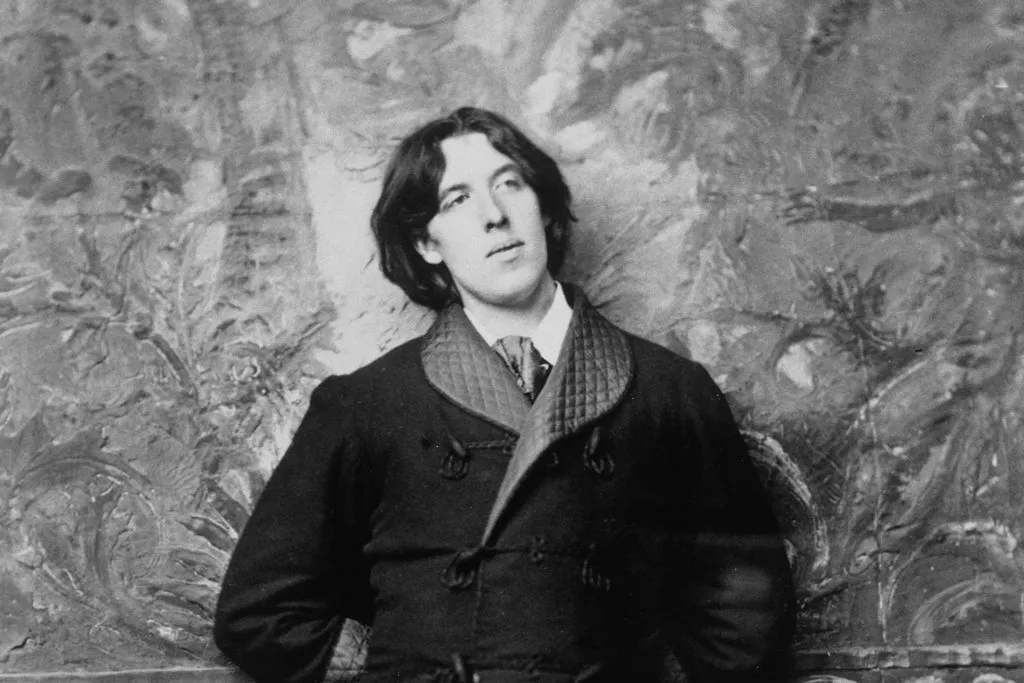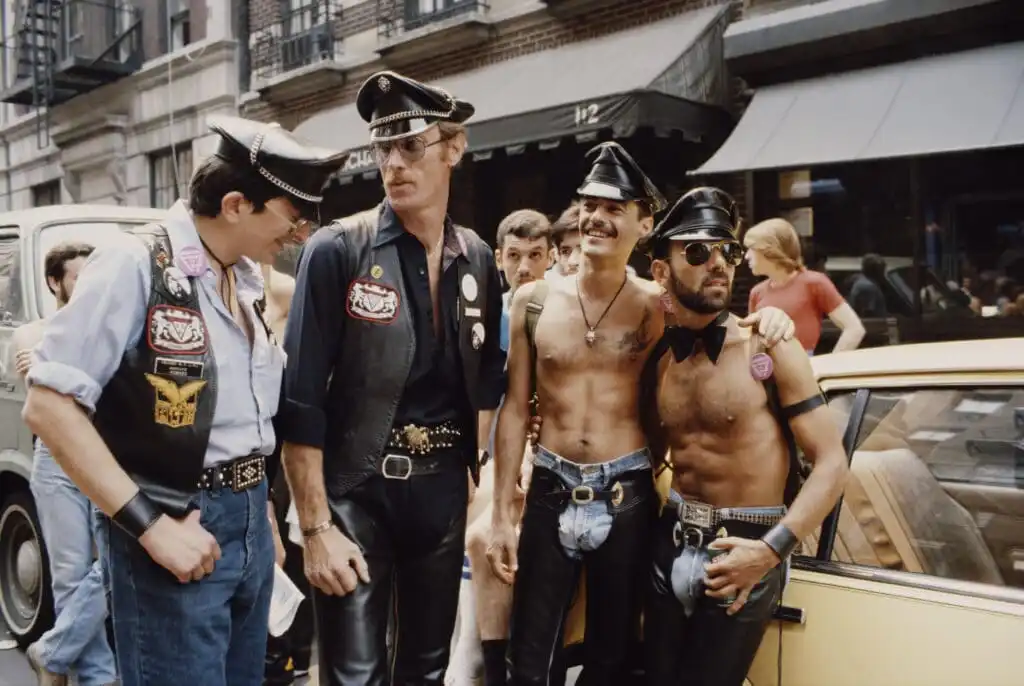The long, deep, surprisingly versatile history of bottoms: From Ancient Greece to modern misogyny

The history of bottoming and the wider history of the patriarchy are one and the same, scholars told PinkNews. (PinkNews)
The year 2022 started with a bang – a gangbang, to be exact.
On 9 January, the Californian OnlyFans user known by the handle breedlacumhole checked into a Los Angeles hotel. Next to a no-frills white lamp and an oak side-table, he took 75 loads in 20 hours.
The stunt stirred weeks of jokes and controversy throughout Gay Twitter – but to João Florêncio, a senior lecturer for the University of Exeter and the author of Bareback Porn, Porous Masculinities, Queer Futures, it was a textbook example of how bottoming culture is changing.
When people think of bottoming – performing the receptive role in sex – it’s not uncommon for them to think of stereotypes for gay men. Think limited edition Lana Del Rey vinyl, watching Call Me By Your Name, sniffing poppers while streaming Charli XCX, avoiding Chipotle.
But bottoming actually has a surprisingly versatile history. Historians, researchers and sexual therapists have all explained how bottoming has long acted as shorthand for submission, shame and, at its core, how the patriarchy views women and those who receive as nothing more than “passive holes”.
“The history of bottoming – or how bottoming has been historically thought about or imagined – is inseparable from the patriarchy,” Florêncio told PinkNews.
“All homophobia is inseparable from the patriarchy because homophobia is a form of misogyny. You hate gay men because they are closer to women, as if they betray masculinity by being penetrated.”
Bottoming, Florêncio said, is the act of being “occupied” while topping is to “invade”. Notice the difference?
“Historically, gays were the bottom,” Florêncio explained. “The top was not gay, they were men and just like all other men.” Florêncio feels that this isn’t surprising: “We had to invent a culture with what was there, and what was there was straight culture.
“So, even in our sexual behaviour and gender presentation, our identities are in response to that binary frame of heterosexual culture, of being masculine and feminine.”
Ancient Greece didn’t subscribe to gay or straight labels
Bottoming can be considered as two different things. There’s bottoming as a physical, sexual preference and act, and bottoming as a personal identity – something that people can say is who they are.
When looking at the history of bottoming it’s inevitable to start with the Ancient Greeks, says Scott Oatley, a sociology PhD student at the University of Edinburgh.
Oatley has researched in-depth how the Ancient Greeks thought of and experienced anal sex. In short: they loved it, but it was the top who came out on, well, top in their dynamic.
Ancient Greeks believed in neither heterosexuality nor homosexuality – instead, they categorised all sex as either passive or active.
The person penetrating always won.
“Same-sex relations were both legally and culturally accepted, and commonly engaged in within Ancient Greek and Roman societies,” Oatley told PinkNews.
“Positionality and power are two key concepts that defined ancient understandings of same-sex relations,” he added. “The person to penetrate was dominant, the person to be penetrated was submissive.
“Sexual acts were a zero-sum game – the person penetrating always won.”

The closest thing in Ancient Greek culture to the modern bottom was the “erômenos,” Oatley said, an adolescent male who couldn’t grow a beard.
Their ‘tops’, meanwhile, were typically older, bearded men called “erastês”.
You can see the power play even in the words themselves. The meaning of erômenos is passive (one who is sexually desired) while erastês is active (to sexually desire). “To be penetrated was to be placed within the inferior and feminising position,” Oatley explained. Some men would even practice intercrural sex (between the thighs) to avoid being penetrated and therefore feminised.
There was, however, a lot of nuances within the stigma. “What was immoral for the Greeks was not bottoming but being passive in your pleasures,” Oatley continued. In other words, the act of bottoming itself wasn’t strictly considered non-masculine – being passive was.
The ways men could avoid being perceived as passive was to be “active” outside of the bedroom, such as by marrying and procreating – men could still receive and be considered manly men, Oatley said, as long as they married and reproduced.
The Romans were more hardline in their views and had a similar workaround. Seeing the world – and women – as things to be conquered and ruled, ‘authentic’ men were considered to be “impenetrable predators”. In other words, a top.
To get around the idea, the Romans saw the penetrated person (women and enslaved, younger males) as of a “lower social status”. To have consensual anal sex with a freeborn man (someone not born into slavery) was even criminalised – but it was the passive person who would be prosecuted, rather than the “active” man.
This stigma, again, ran deep into the words used at the time for the acts. Men who were anally receptive were either derogatorily called a “cinaedus” and seen as defective, or dubbed “pathicus”, a term for masochists who derived pleasure from penetration regardless of gender. Neither meant the person was queer as such, rather they desired to be a receptacle for sex.
Beyond the Greeks and Romans, feminine men have not always been considered less than. In 18th-century Britain and France, for example, the Dandies, peacocking guys who worshipped appearance above all else, were considered hot studs to straight women.
Even the word “gay” in the 1800s typically referred to aggressively straight womanisers and heterosexual brothels rather than homosexuality. “The concept of homo and heterosexuality are, in the scheme of human society, a novel concept,” Oatley noted. “Homosexuality was first coined in English in 1892, with heterosexuality coming a few years later.”
The ‘feminine gay’ stereotype, which today is linked to stereotypes around bottoming, is very much the historical outcome of centuries of patriarchal attitudes towards being a passive partner in sex, and a wave of anti-sodomy laws from the 1500s.
For years, the public image of a gay man was like that of Oscar Wilde: floppy haired, ‘feminine’ and, to society, degenerate.

As the AIDS crisis loomed, queer men split into ‘tops’ and ‘bottoms’
Queer men, tired of being tied to effeminacy, embraced “hyper-masculine” ideals in the 1970s, Florêncio explained – think bulging beefcakes and leather daddies with Sharpie-black moustaches – to “fight the idea that gay men were like women”.
Then the AIDS crisis seized the world and provoked, even more, the stigma of men receiving, as well as bringing the need for the terms “top” and “bottom”.
To receive was seen as dangerous by those uneasy about the virus ripping through their community. Considering it a safer route, many men vowed to never anally receive again, kindling the need for absolute descriptors such as “top” and “bottom”.

Born out of anxiety and the historic humiliation attached to womanhood, “that led to what we would now call ‘bottoming shaming’ or ‘bottom shame’,” Florêncio added.
“So, in the 1970s, you could say that when ‘men were men’, there was a lot of versatility. Entering the AIDS crisis in the 1980s, those sexual positions polarised because of the cultural narratives around HIV.”
Straight male adult entertainers of the time captured this sharp split well, Florêncio added.
Those who went “gay for pay” tended to top given that the position is more comparable to the penetrator role in straight sex. They would say topping didn’t make them gay because, much like the Greeks and Romans, “if you’re the one f***ing, you’re not gay,” Florêncio explained.
“You’re still a ‘real man’. You’re only gay if you take it.”
The future of bottoming? The heroic vampire ‘power bottom’ who ‘drains tops’
Looking to the future of bottoming, Florêncio said that medical leaps in the treatment of HIV and AIDS, such as the HIV-preventative pill PrEP, have helped soften the stigma of bottoming. With HIV no longer akin to a death sentence, a new bottoming identity has emerged: The “hyper-masculine power bottom“.
“The figure of the power bottom, anecdotally in gay culture, is both desired and feared,” Florêncio said. “In some ways, they’re like vampires. The bottom at the centre of a gangbang is the most typical porn scene of all time… until you see how the bottom is portrayed almost like a hero.
“All the masculine traits – endurance, heroism, athleticism – is now being associated with bottoms. They embrace being f**ked, which used to be seen as emasculating and make it super manly by almost becoming superheroes – the power bottom.
“The power bottom is, in a way, an anomaly, but one that is admired. Everyone wants to be a power bottom.”
Hangups around masculinity remain, though, as “all tops are scared of power bottoms, they’re drained by them”.

Ness Cooper, a clinical sexologist based in Norfolk, agrees. The act of penetrating is not as entrenched in power as it once was.
“Before it always used to be that the submissive bottom was only there for their dom’s enjoyment,” Cooper said, “but often with the discussion of limits and likes and dislikes, it’s clear that those going into submission also gain satisfied enjoyment from their partners.”
Things are, in short, becoming a lot more nuanced. Sex is not simple, Cooper said, especially when it comes to the “social-psychological impact” these expectations can have on us. “Things have greatly changed in what being the receiver really means now, and many people are moving away from just being a passive hole,” Cooper stressed.
As bottoms rewrite themselves to be dominating and masculine, even tops are doing the same. The flipside of the power bottom, Florêncio added, is the “blouse”, a femme top.
Is this necessarily a good thing? Florêncio remains unconvinced. We still haven’t quite shaken off the sexism that entrenches queer language: “We’re still trying to make sense of what we do with a language that isn’t ours,” he said.
Take the relatively new phrase, the “bossy bottom” which, according to crowdsourced LGBTQ+ dictionary Queer Undefined, refers to “a man who is receptive in anal sex but who gives direction during sex in an aggressive or dominant way (bossy).” For someone who bottoms, even if they do so in a traditionally “masculine” way, still cannot avoid being shamed as the spectre of misogyny continues to raise its head.
Queer culture remains stunted by the fault-finding, power-hungry patriarchal world around it. “Even in the power bottom we see a lot today,” Florêncio warned, “as much as it embraces penetration – the more they are f***ed, the more of a man they are – it also clings to masculinity: the lack of emotion or connection, being rough and being as athletic as Superman.
“The more dicks you take, the more of a man you become. The power is in the pride. You take still it, as they say, like a man.”
How did this story make you feel?

